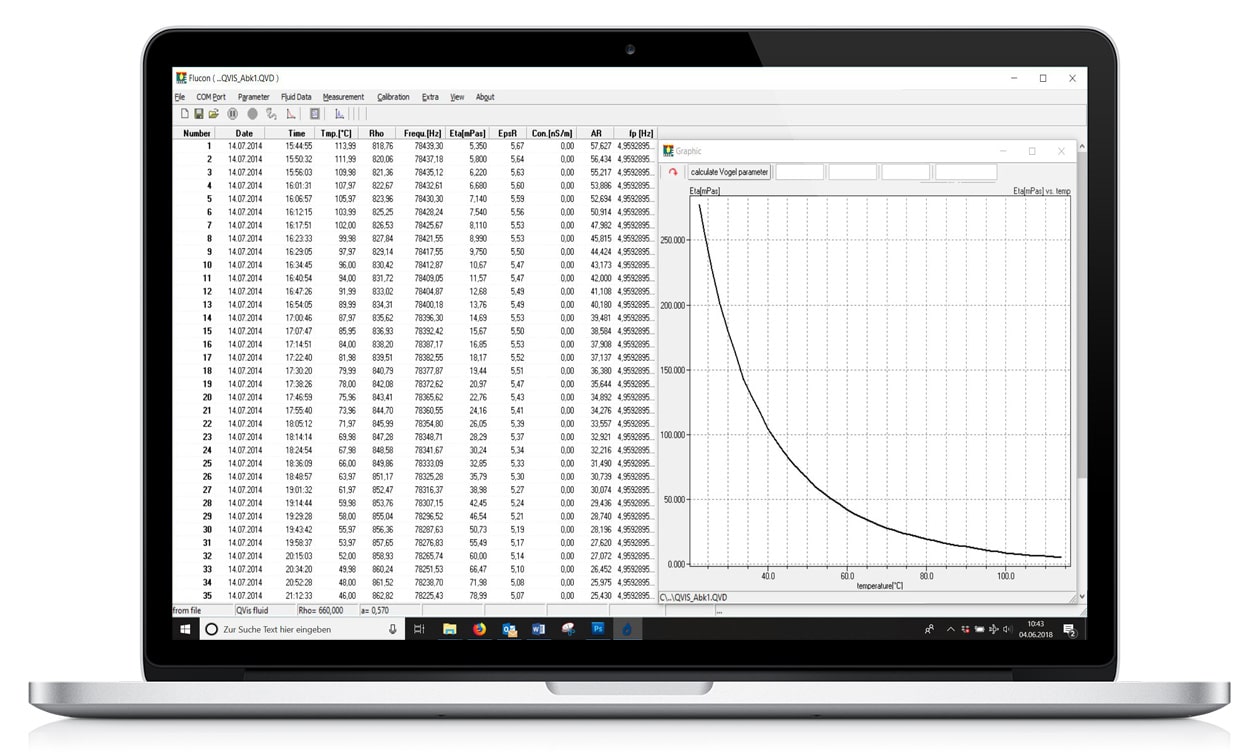Fundamentals of quartz viscosimetry
Starting point
The principle of quartz viscosimetry is based on the idea of W.P. Mason. The basic concept is the application of a piezoelectric crystal in the shape of a torsional oscillator for the determination of viscosity. On the one hand, the high-frequent electrical field that is applied to the oscillator causes a movement of the sensor and in consequence the shearing of the fluid. On the other hand, the movement of the sensor is influenced by the external forces (the shear stress) of the fluid which affects the electrical response of the sensor.
Development of the quartz viscosimeter QVis
The calibration procedure as a prerequisite of viscosity determination using a quartz goes back to the founder and CEO of flucon fluid control GmbH B. Bode who facilitated the detailed analysis of the electrical and mechanical transmission behavior of the oscillating system. On the basis of this calibration, the quartz viscosimeter was developed which allows continuous viscosity determination in resting and flowing liquids.
The QVis is comprised of two components, the electronic unit equipped with an electronic control and evaluation system on the one hand, and the measuring head which surrounds the quartz on the other hand. The micro processor which is part of the electronic unit is responsible for determining the oscillating behaviour of the quartz crystall sensor. With the help of the calibration function, the viscosity is determined in a next step.
Advantages of viscosity measurements by means of a quartz sensor
- no molecular destruction of the measuring fluid
- no temperature effects on the measuring fluid
- small sample sizes sufficient
- large measuring range (1 to 10.000 mPas)
- chemical resistance of the quartz sensor
- suited for temperatures up to 500°C and pressure up to 10 kbar
- resistant against dirt and deposits
- easy to clean
Accurate and versatile
The core of the QVis viscosimeter is an oscillating quartz which is robust and versatile: with its wear-free crystal QVis can determine the dynamic viscosity of both resting and flowing liquids. Being fully independent of the flow conditions, your liquid can even have turbulences.
And here is how QVis works: Once immersed into the test liquid the oscillating behavior of the quartz changes. Each influence on the oscillation has specific characteristics and will be analyzed thoroughly by the flucon device to determine the viscosity. This patented, tried and trusted measuring method makes our QVis a unique instrument that opens up many new possibilities for the determination and for the control of viscosity.
Key features
- Available for both inline/process and laboratory applications
- Measurement of the dynamic viscosity and temperature
- Simultaneous display of the kinematic viscosity
- Determination of the viscosity independent of the direction of flow
- High shear-rates without adverse effects on the test fluid
- Large measuring range (1 to 10.000 mPas)
- Only small samples required for measurements (approx. 35 ml)
- Short set-up and measuring times
- Easy to handle and to clean
- Robust quartz sensor without any moving parts
- Standard digital interface (RS-232) for optional connection to your WINDOWS PC

Fields of application
The QVis viscometer can be run either in stand-alone mode or - with the included powerful software - on any WINDOWS computer via RS-232/USB. By means of its analog output (process version) it can also be used to surveil certain viscosity control elements, e.g. for diluent admixing.

